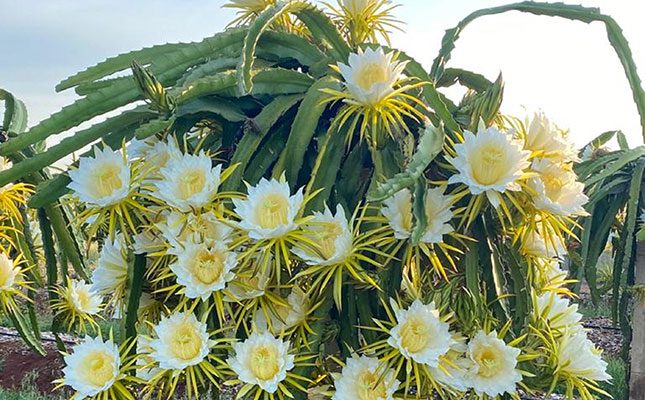
Dragon fruit yields and sales on an upward curve
Established two years ago, the Dragon Fruit Growers’ Association of Southern Africa has put much effort into research on production practices for the Southern Africa climate, and this has led to an increase in both the total harvest and yield per hectare. The association currently comprises 20 farmers.
Fred Steyn, owner of Kuifkop Beleggings in Nelspruit, Mpumalanga, said that yields on his farm had risen from 10t/ha last year to 15t/ha this year. While this was lower than the international average of 20t/ha, the progress made was significant.
“We have a good season this year, with high quality and low pest pressure. The cold, wet December had a negative impact on pollination and fruit set across the country, but this improved as the season progressed,” Steyn said.
Jaco Jacobsohn, dragon fruit production manager at AL3 Boerdery in Dendron, Limpopo, said their harvest had doubled from the previous season due to a combination of better fertiliser programmes, good weather, and natural growth in production as the orchards matured.
“The industry is quite new and we’re still trying to figure out what works to obtain better yield. We’ve noticed that the plants require more potassium and less nitrogen than initially thought.
“Increasing beehives from six/ha to eight/ha has also shown good results.”
As South African consumers were becoming more familiar with the fruit, demand was picking up. Steyn noted that two years ago he struggled to sell one pallet of fruit a week, whereas this year he was able to send four pallets per week to market.
Jacobsohn added that local prices were far better than last year, although they dipped in the peak season from January to February.
“We received R50/kg to R60/kg, which is R10/ kg more than last year. At this price, farming dragon fruit is feasible.”
He said that exports were needed to offload high volumes during peak season. But with the European economy under pressure and the costs of exporting high, chasing this market was not necessarily feasible.
“Prices are around 20% higher for exported dragon fruit than locally. But the price you get doesn’t really justify all the hoops you have to jump through to comply, and the cost of packaging.”
Both Steyn and Jacobsohn were optimistic about the industry, however, and believed that if the export market were introduced to sweeter varieties from South Africa, demand and prices would continue to rise.
Source: Farmersweekly.co.za
